#perissodactyla
Explore tagged Tumblr posts
Text

Mountain Tapir (Tapirus pinchaque), family Tapiridae, order Perissodactyla, Colombia
ENDANGERED.
Smallest species of tapir.
The only species of tapir found outside of tropical rainforest.
Found in the Andes Mountains of Colombia, Ecuador, and Peru.
Also called the Woolly Tapir or the Andean Tapir.
photograph by Diego Lizcano
791 notes
·
View notes
Text
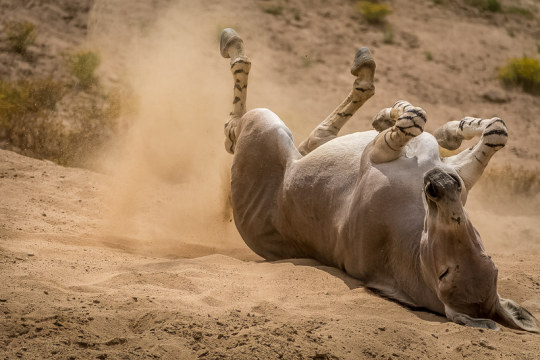
A Somali wild ass (Equus africanus somaliensis) rolls in the sand at San Diego Zoo and Safari Park
by Helene Hoffman
#somali wild ass#african wild ass#equines#equus africanus#equus#equidae#perissodactyla#mammalia#chordata#san diego zoo#captive animal
2K notes
·
View notes
Text
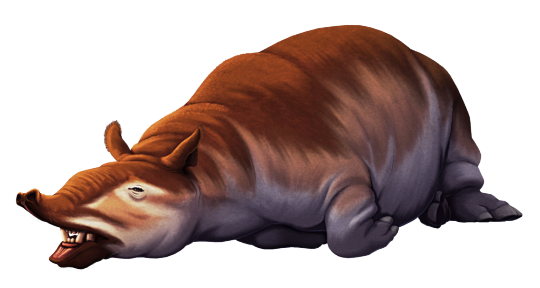
Cadurcodon ardynensis was an odd-toed ungulate that lived in what is now Mongolia during the late Eocene, about 37-34 million years ago.
It was around 2m long (6'6") and, despite its very tapir-like appearance and lack of horns, it was actually closer related to modern rhinoceroses – it was part of a group of early rhino-cousins known as amynodontids, which convergently evolved both hippo-like and tapir-like lifestyles.
Cadurcodon was the most tapir-like of the tapir-like amynodontids, with a short deep skull and retracted nasal bones that indicate it had a well-developed prehensile trunk. Males also had large tusks formed from their upper and lower canine teeth, which may have been used for fighting each other.
———
NixIllustration.com | Tumblr | Patreon
References:
Averianov, Alexander, et al. "A new amynodontid from the Eocene of South China and phylogeny of Amynodontidae (Perissodactyla: Rhinocerotoidea)." Journal of Systematic Palaeontology 15.11 (2017): 927-945. https://doi.org/10.1080/14772019.2016.1256914
Громова, В. [Gromova, V.] Болотные носоро��и (Amydontidae) Монголии. [Swamp rhinoceroses (Amynodontidae) of Mongolia.] Trudi Paleontol. Inst., Akad. Nauk SSSR 55:85-189 (1954) https://www.geokniga.org/books/13983
Prothero, Donald R., and Robert M. Schoch. Horns, tusks, and flippers: the evolution of hoofed mammals. JHU Press, 2002. http://www.rhinoresourcecenter.com/pdf_files/141/1415340780.pdf
Wall, William P. "Cranial evidence for a proboscis in Cadurcodon and a review of snout structure in the family Amynodontidae (Perissodactyla, Rhinocerotoidea)." Journal of Paleontology (1980): 968-977. https://www.jstor.org/stable/1304363
Wikipedia contributors. “Amynodontidae.” Wikipedia, 17 Dec. 2023, https://en.wikipedia.org/wiki/Amynodontidae
Wikipedia contributors. “Ergilin Dzo Formation.” Wikipedia, 12 Feb. 2024, https://en.wikipedia.org/wiki/Ergilin_Dzo_Formation
#science illustration#paleontology#paleoart#palaeoblr#cadurcodon#amynodontidae#rhinocerotoidea#stem-rhino#perissodactyla#ungulate#mammal#art#he just woke up
275 notes
·
View notes
Text
Taxonomy Tournament: Mammals
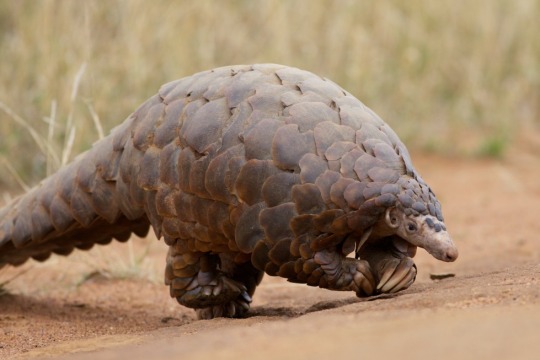
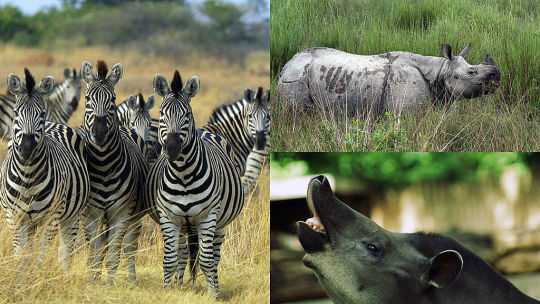
Pholidota. This order is made up of the pangolin, the only mammal to have keratin scales.
Perissodactyla. This order is also known as the odd-toed ungulates because they (mostly) have hooves and bear weight on one or three toes. It is made up of equines, rhinos, and tapirs.
#animals#biology#polls#poll tournament#zoology#pangolins#mammals#tetrapods#horses#donkeys#rhinos#tapirs#Pholidota#Perissodactyla#0x60v0x9f#animal tournament#Animal Tournament Round 1
331 notes
·
View notes
Text

African Wild Asses (Equus africanus) - (c) SaritaWolf - please do not repost
56 notes
·
View notes
Text
Uncharismatic Fact of the Day
One of the most iconic symbols of freedom and wilderness is the wild horse; it's fitting, then, that the Przewalski's (sheh-VAHL-skee) horse is known as "takhi," which means "spirit" in Mongolian.
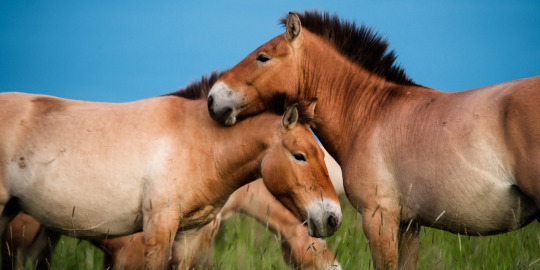
(Image: A pair of Przewalski's horses (Equus przewalskii) by Katalin Ozogány)
#Przewalski's horse#Perissodactyla#Equidae#wild horses#horses#ungulates#odd-toed ungulates#mammals#uncharismatic facts
200 notes
·
View notes
Text

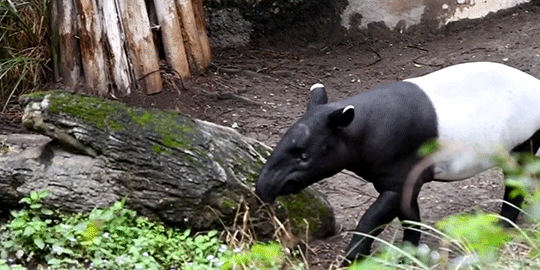
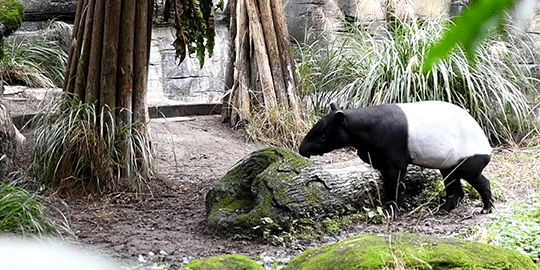

Looking at the their small, flexible proboscis (snout and upper lips) and thick, rough skin, the casual observer might think the tapir is a relative of pigs, or related to anteaters or elephants. Its closest relatives are actually the horse and rhinoceros. Similar to their earliest hoofed ancestors, tapirs have four toes on the front feet and three toes on the hind feet. The toes are separated widely, with the middle toes larger than the others. All toes have hooves, and each foot has a callous pad which supports some of the weight.
At first glance tapirs may look like slow and clumsy animals, and an easy catch for predators. In fact they're very capable! Tapirs have recessed eyes and short ears, legs and tail. They also have a stocky body that is rounded in back and tapered in front. When threatened, their compact and streamlined shape enables them to crash through the thickest forest underbrush with remarkable speed. They are also excellent divers and swimmers, and seek refuge from predators in deep waterways, where they can remain submerged for several minutes. If cornered the thick, hard skin on its neck helps to protect it from a predator's sharp fangs. Tapirs also have strong jaws and large teeth that can inflict a serious bite. ©
158 notes
·
View notes
Note
The humble brazilian anta please!!
Absolutely! I love the way they look.


Photos from the Dublin Zoo and Robin Gwen Agarwal respectively.
#vulnerable species#south american wildlife#tapir#south american tapir#brazilian tapir#brazilian anta#mammalia#mammals#mammal#perissodactyla#tapiridae#animal polls#poll blog#my polls#animals#polls#tumblr polls
30 notes
·
View notes
Text
There are under 16,000 white rhinos left in the wild; the northern subspecies is functionally extinct, with only two older females left in the world. So all that remain are a few thousands southern white rhinos, to include those in captivity.
The guy who owned this white rhino ranch lobbied to have the South African ban on rhino horn sales lifted, even though there are international bans still in place such as the Convention on International Trade in Endangered Species. He had cut the horns of his rhinos to keep them from being poached, and stored them away. In spite of having hundreds of millions of dollars worth of horns in his possession, he wasn't able to continue buying feed for 2,000 rhinoceroses, hence the sale.
I don't know whether that sale includes the detached horns or not. It's maddening that as we approach 2024 there are still people who will pay exorbitant fees for rhino horns as a medication even though there's zero evidence it has any effectiveness, and there are likely collectors who want one simply to have it due to their rarity. I don't know enough about the potential for legalizing trade in horns cut off of living rhinos with the aim of making poaching less lucrative to have an opinion either way, but having seen how much misrepresentation and outright lying can happen in the global trade of animal remains I'm not feeling optimistic about this as a solution.
I am, however, grateful that this massive herd of highly endangered animals--about 15% of the world population of white rhinos--are now in the hands of those who are going to get them back out into the wild, albeit in protected areas. Here's hoping that these rescued rhinos will be able to add more genetic diversity back into the wild populations and strengthen them for the future.
#rhinoceros#rhinos#ungulates#perissodactyla#mammals#wildlife#endangered species#endangered animals#extinction#nature#animals#conservation#environment#animal welfare#scicomm#charismatic megafauna#megafauna#rewilding#habitat restoration
111 notes
·
View notes
Text
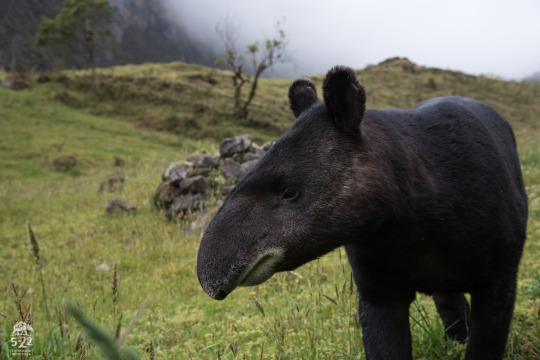

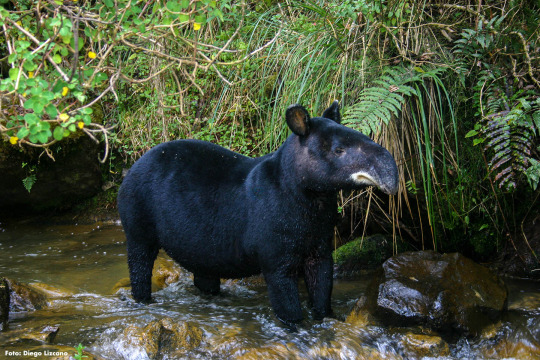
Mountain tapir/Andean tapir - tapirus pinchaque
📍Colombia, Ecuador, Peru
🌡️Endangered
8 notes
·
View notes
Text
A baby ungulate is like a little princess
3 notes
·
View notes
Text

Rhinoceros, Our Living World, Vol. I (1885) - Rev. J.G. Wood
*Digitally restored by Molly Wilders, from scans uploaded to Biodiversity Heritage Library
#Wonder Rooms#Cabinet of Curiosities#L Prang & Co#Public Domain#19th Century#Rev J G Wood#Joseph B Holder#Our Living World#Scientific Illustration#Natural History#Zoology#Animalia#Mammalia#Perissodactyla#Rhinocerotidae#Rhinoceros
6 notes
·
View notes
Text

A Przewalski's horse stallion (Equus przewalskii) in Mongolia
by Soyolbold S
#przewalski's horse#mongolian wild horse#tahki#equines#equus przewalskii#equus#equidae#perissodactyla#mammalia#chordata#wildlife: mongolia#wildlife: asia
3K notes
·
View notes
Text
Artober Day 6. A skull from Moropus elatus, a type of Chalicothere.

3 notes
·
View notes
Text
Taxonomy Tournament: Mammals


Caniformia. This suborder of Carnivora contains dogs, foxes, bears, otters, badgers, raccoons, skunks, seals, and walruses.
Perissodactyla. This order is also known as the odd-toed ungulates because they (mostly) have hooves and bear weight on one or three toes. It is made up of equines, rhinos, and tapirs.
#pitting two bad bitches against each other#or; bad bitches against bad mares#animals#biology#polls#zoology#dogs#foxes#bears#raccoons#skunks#seals#mammals#tetrapods#horses#donkeys#rhinos#Caniformia#Perissodactyla#0x1fv0x60
62 notes
·
View notes
Text

Southern White Rhinoceros (Ceratotherium simium simium) - (c) SaritaWolf - please do not repost
24 notes
·
View notes